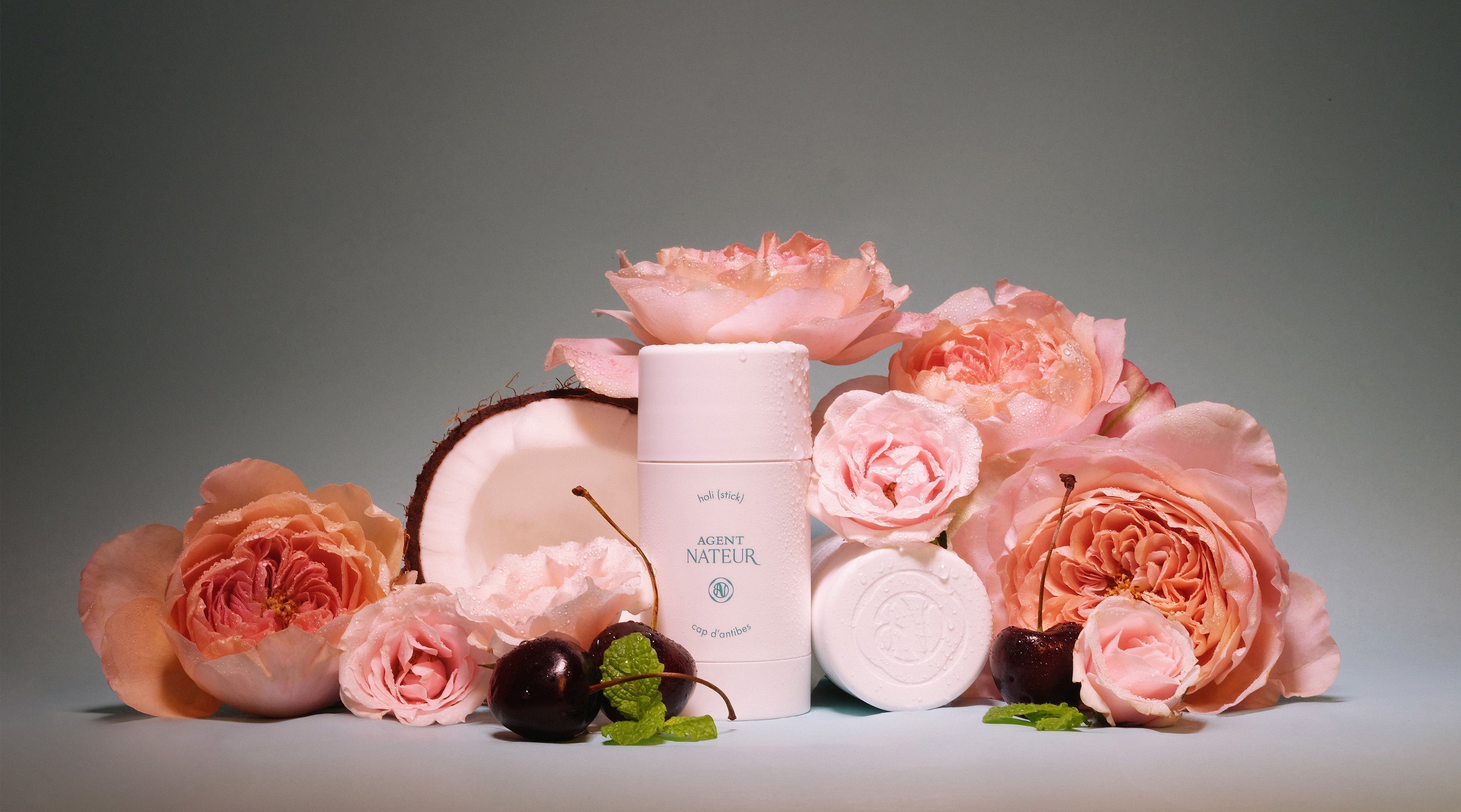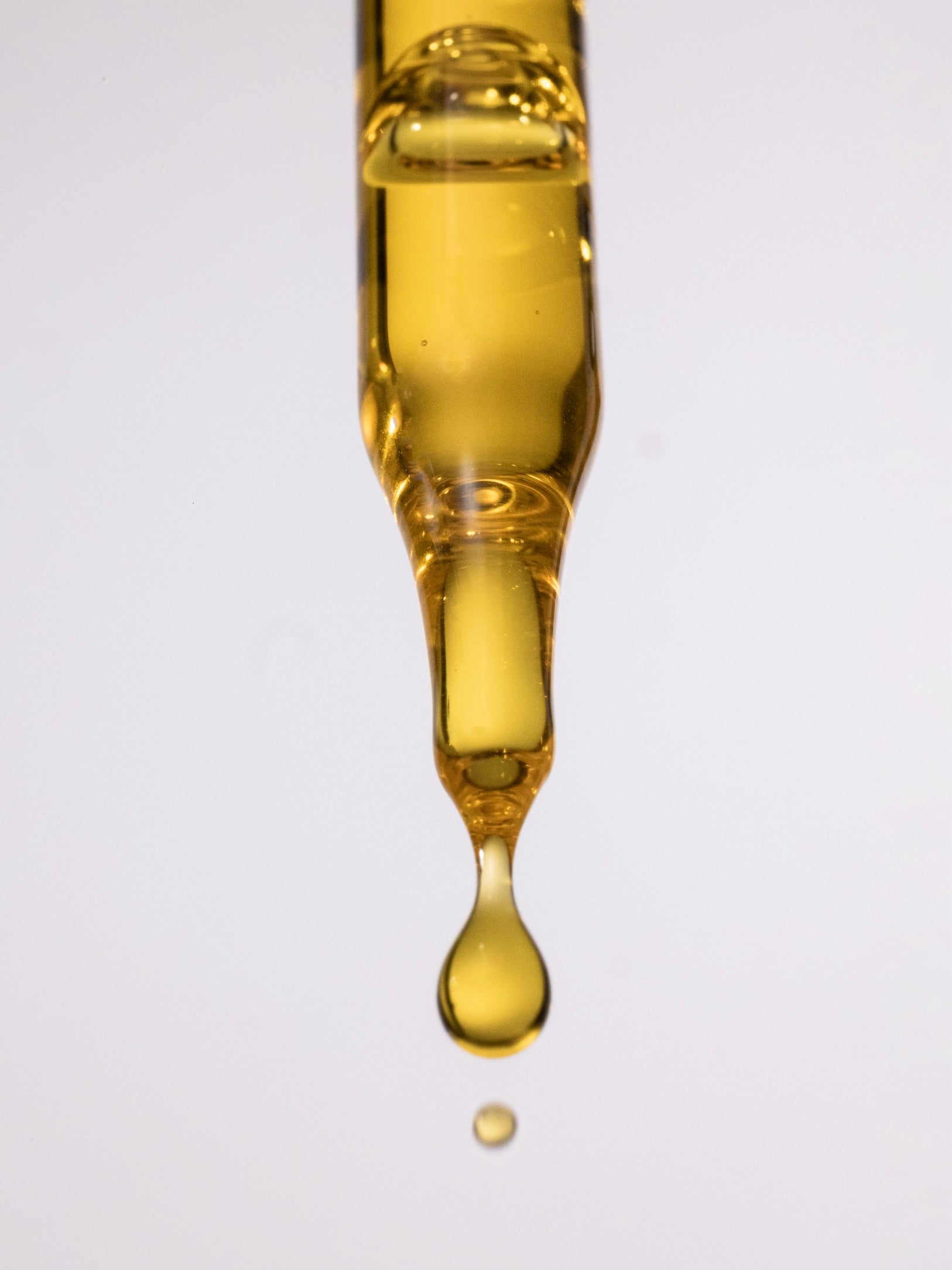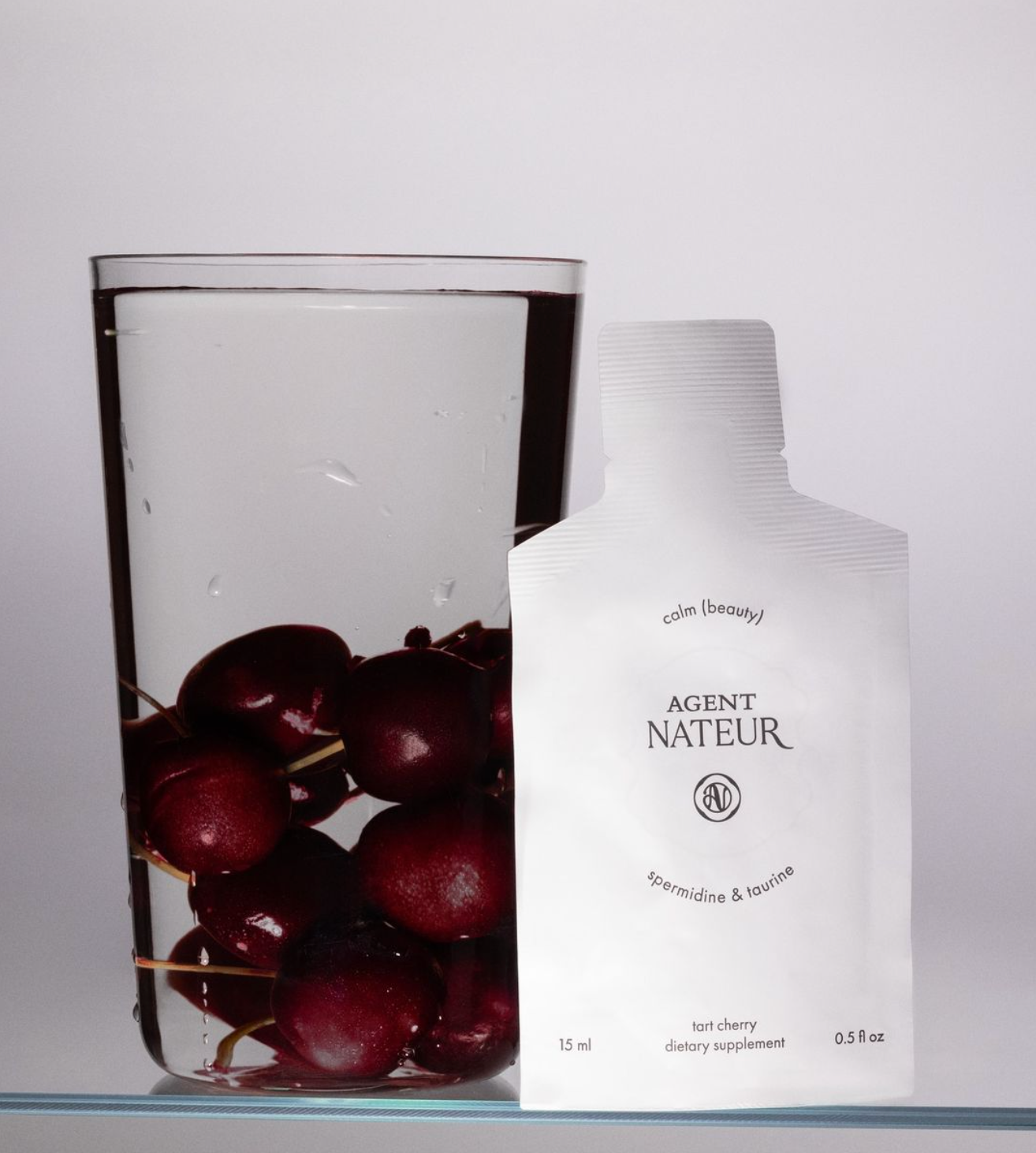Why We Avoid These Harmful Synthetic Fragrances

By Hazel Scott
Agent Nateur has been at the forefront of clean beauty for a decade, crafting formulations that are as effective as they are luxurious. To celebrate our 10-year anniversary, we are relaunching our flagship product—the holi (stick) deodorant.
With the rise of clean beauty, more brands claim to be "natural," yet many still include synthetic fragrances and harmful ingredients in their formulations. When it comes to deodorant, choosing an aluminum-free and synthetic fragrance-free option is more than just a wellness trend—it’s a necessity for your long-term health.
What are the dangers of using synthetic fragrance?
The skin in our underarm area is delicate and prone to moisture and friction, making it more vulnerable to irritation and allergic reactions. Synthetic fragrances are a leading cause of skin sensitivities, rashes, and contact dermatitis, particularly in this area of our bodies.
Synthetic fragrances can contain hidden dangers not just to our skin, but to our health and the environment - from disrupting hormones, causing allergies or skin reactions, respiratory issues, and there are that link them to cancer. Although some of the worst offenders are found in car air fresheners, plug-in air fresheners, cleaning supplies and laundry detergent, we should also be looking out for these in skincare and beauty products. Many fragrance chemicals are VOCs (Volatile Organic Compounds), which evaporate at room temperature, and as they are released into the air, they can trigger headaches, dizziness, asthma, and other respiratory problems whilst also contributing to air pollution.
Yet one of the problems we face is that these substances aren’t always easy to spot. They aren’t listed individually in the ingredients section because manufacturers are not required to disclose the specific chemicals they use. So it can be quite a challenge for us to identify what could potentially be harmful ingredients, since fragrance ingredients are often listed as just "fragrance" or “parfum”. But there are some known problematic ingredients that you can look out for:
-
Phthalates
-
Styrene
-
Musk Ketone
-
Methylene Chloride or Dichloromethane (DCM)
-
Parabens
And here’s why we should avoid them.
Phthalates: These are used in manufacturing plastic products and fragrances, with two specific types - DEP and DEHP - often found in mainstream perfumes. DEP (Diethyl phthalate) is used as a solvent to help the ingredients blend together, so the scent lasts longer. Generally considered safe for humans, studies have shown that it can disrupt our endocrine system, negatively impact male fertility, and harm the development of foetuses during pregnancy. Similarly, DEHP (Di(2-Ethylhexyl) phthalates) is used as a fragrance carrier to help blend and hold ingredients together, and create a long-lasting scent, but it has been linked to cancer and endocrine disruption. Since 2008, its use in children's toys and childcare products has been banned if it exceeds 0.1% concentration.
Styrene: This man-made chemical is also used in plastics and to improve the longevity of fragrances. While this use has been widely accepted, recent studies have raised concerns about potential risks, linking styrene exposure to cancer and damage to the central nervous system, prompting regulatory agencies to impose restrictions on usage in certain products.
Musk ketone: This synthetic musk is widely used in the perfume industry as it mimics the scent of natural musk, and is a fixative and scent enhancer. But it’s been linked to health and environmental concerns, with studies showing that exposure to musk ketone can lead to brain cell degeneration, hormone disruption, and even cancer. It also has a low biodegradability, so it poses a risk to aquatic life and can contaminate water sources.
DCM (Methylene chloride, also known as dichloromethane): This highly potent solvent is used for stripping paint, degreasing metals, and decaffeinating coffee. Numerous health hazards and toxicity concerns include an increased risk of cancer, particularly liver and lung cancer, due to prolonged exposure in industrial settings, and it can cross the placental barrier during pregnancy, potentially causing harm to the developing foetus. It is also a skin irritant and can cause chemical burns upon contact. Despite being officially banned in perfumes since 1988, methylene chloride may still be present in certain fragrance products due to inadequate regulation and oversight.
Parabens: Commonly used in perfumes and other cosmetics to prevent bacterial growth and prolong shelf life, in the US, the FDA considers parabens safe for cosmetics. Yet in Europe, the EU limits concentrations in cosmetic products to less than 0.4 percent for individual paraben chemicals and 0.8 for mixtures. Methylparaben and propylparaben are most commonly used in perfumes, whilst ethylparaben and butylparaben can also be used. A main concern is how they can accumulate in the body, and while methylparaben is flushed out quite quickly, it can trigger allergic reactions and contact dermatitis in some people. It’s also been linked to cancerous skin damage, particularly when mixed with exposure to sunlight. Propylparaben has been associated with decreased fertility and altered gene expression, including in breast cancer cells and it’s been shown to accelerate the growth of breast cancer cells. Although studies on the potential risks of parabens are still ongoing, many companies are now shifting towards alternative preservatives in response to consumers demanding paraben-free products.
So make sure you read labels and the lists of ingredients you can find online. Look for products with natural fragrance ingredients - these are often made with essential oils and other natural scents like isolates.
Other nasties to look out for include:
Benzyl Acetate: May cause lung, eye irritation and coughing.
Ethyl Acetate: May trigger respiratory and eye irritation.
Camphor: Has neurotoxic effects and causes convulsions, muscle twitching, dizziness, nausea, and confusion.
Butylphenyl methylpropional (Lilial): A scent chemical restricted in the European Union due to its potential for dermal sensitization.
That’s a lot of things to avoid. For your skin, your health and the environment. So if you really want to make sure your deodorant is not just effective, but is also safe, our new holi (stick) range range is now available to order - and this time round we’re really spoiling you with five gorgeous scents to choose from.





